
Smooth as Silk
This morning we visited the Macclesfield Museum of Silk, and the Paradise Silk Mill Museum next door.

You may wonder what a mummy case of an Egyptian priestess is doing in a silk museum, but the museum the usually houses the mummy is closed for renovation, and the Victorian lady archeologists who brought it back to Macclesfield bought it with profits from the silk business. Sadly they decided the mummy itself was too smelly to bring back on their boat, so they buried it in Egypt. Victorian explorers were not known for their cultural sensitivity.
The silk industry in Macclesfield started with button making.
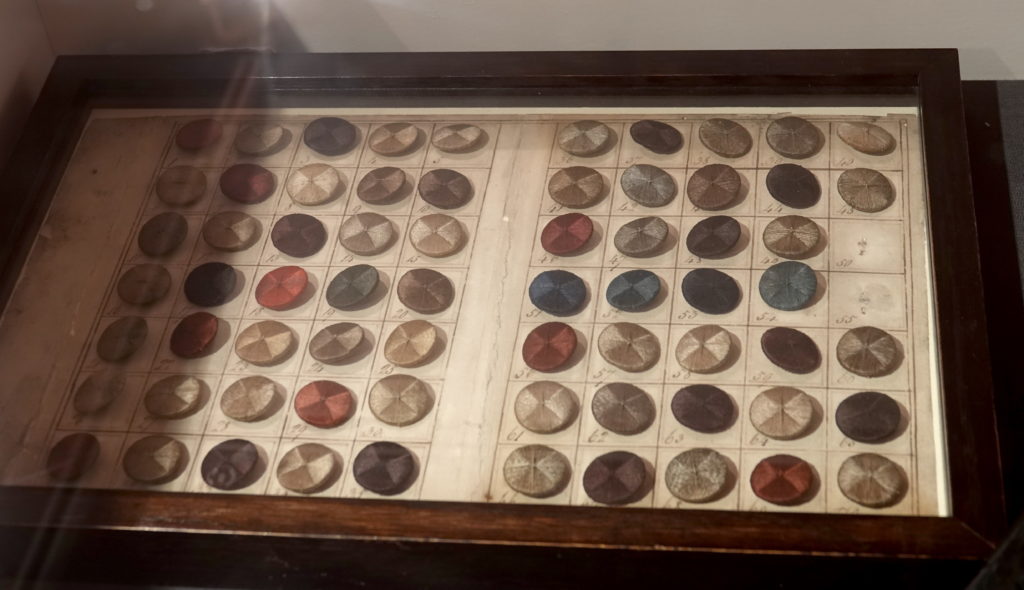
Silk thread was wound by hand round wooden forms. It was a cottage industry, and was mostly a way for the wives and children of farm workers to bring in some extra income. However, in the mid 18th century factories were set up there to twist the raw silk into silk thread and weave it into fabric.
The museum had samples of all sorts of silk fabrics, with the designs woven, printed, or embroidered.

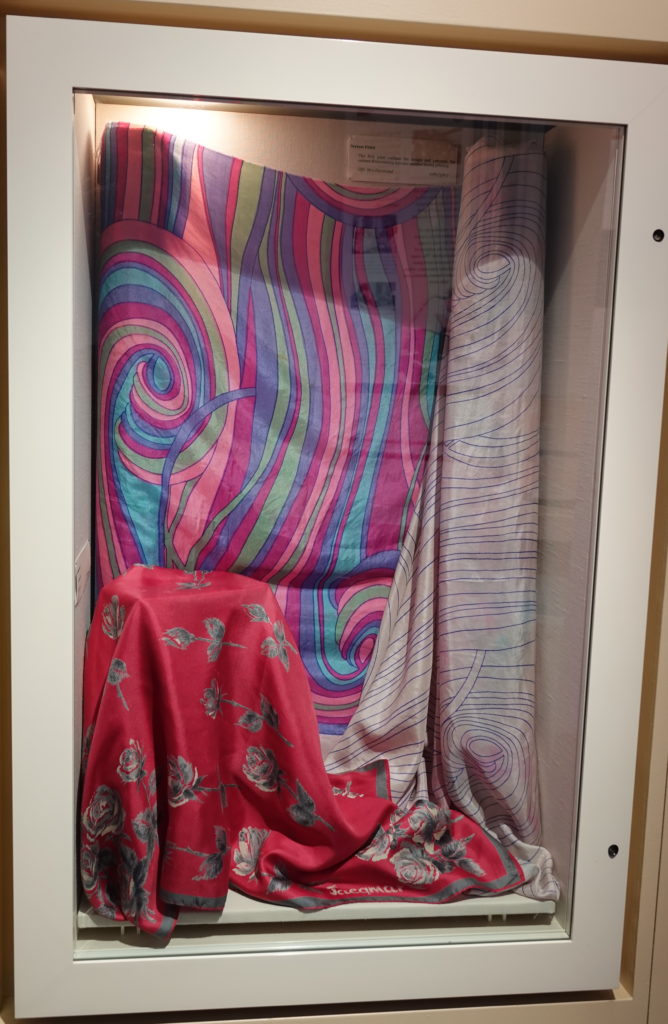

Silk was not just used for clothing. In the Second World War it was used for parachutes (yes, that little purse sized object is a silk parachute for a fighter pilot)…

… code books…

… and escape maps for soldiers who might be captured by the enemy.
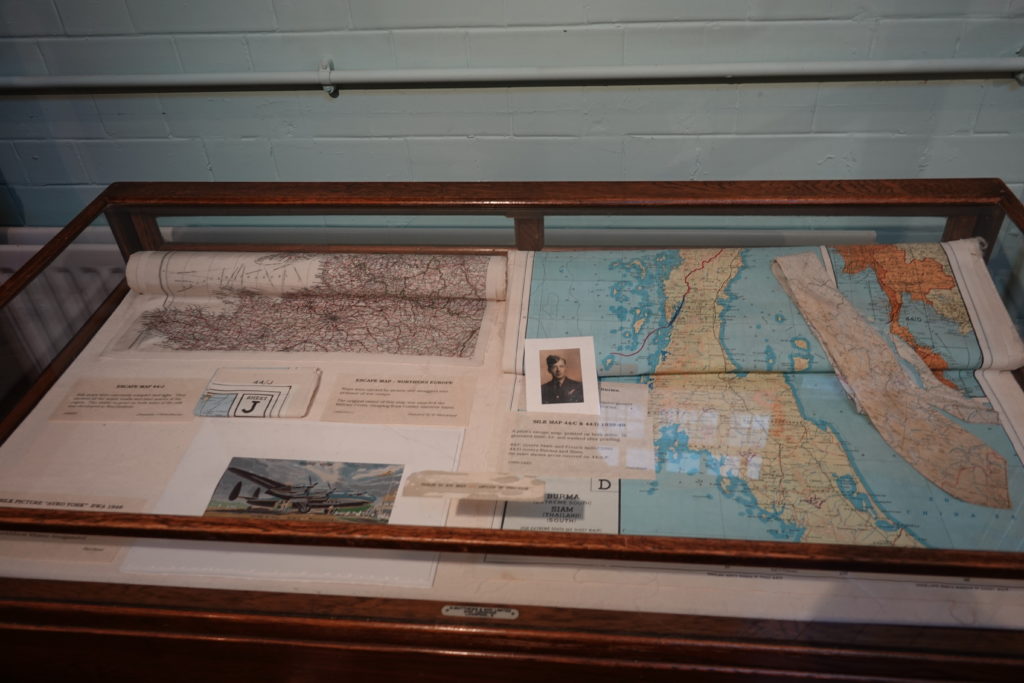
The owner of the map at the top left escaped from Colditz nineteen times. By the end of the war the locals were probably waving at him every time he sneaked by.
Fritz, was ist das?
Es ist nur der verrückte Engländer, der wieder flieht. Geh wieder schlafen.
After the war the surplus maps were reused to make dresses…
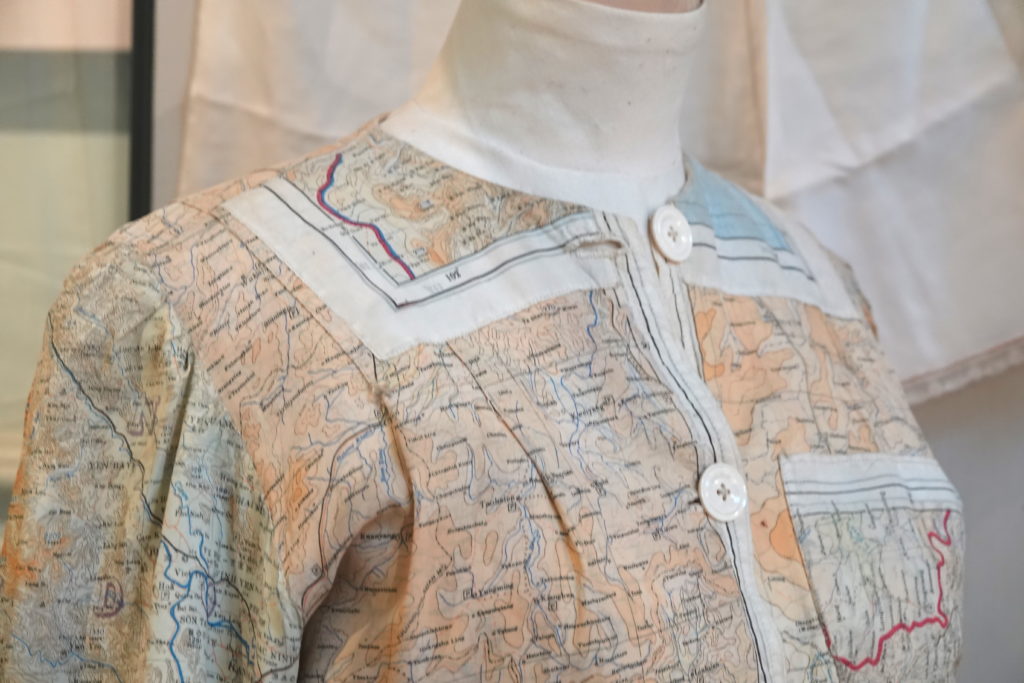
… and the parachute silk was made into knickers.

But the real treasures in the museum are not the fabrics, but the machines that made them.
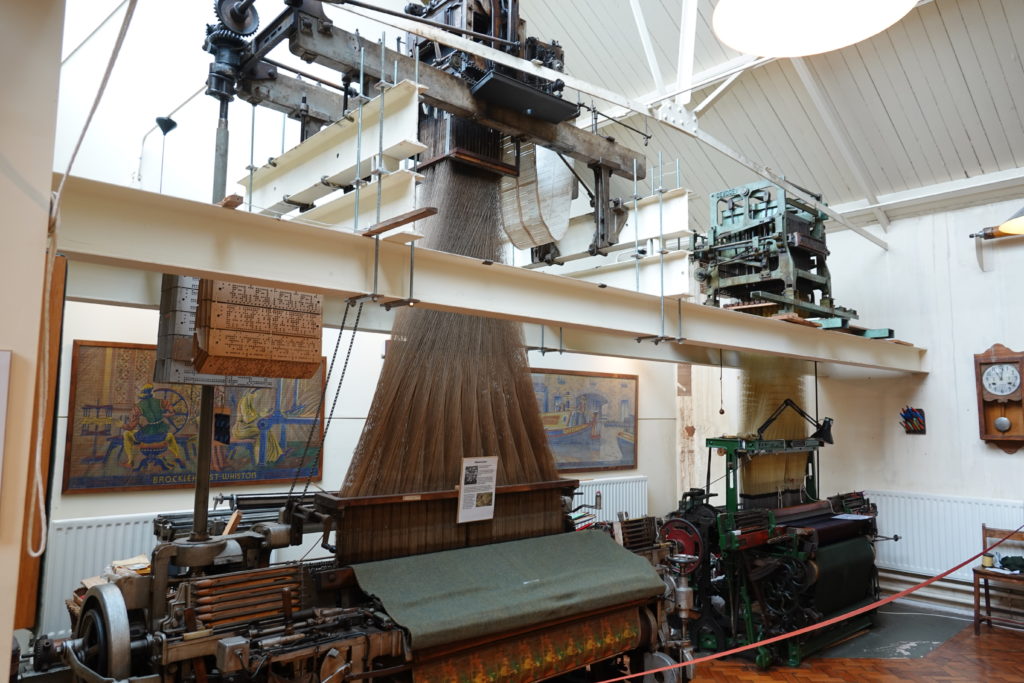
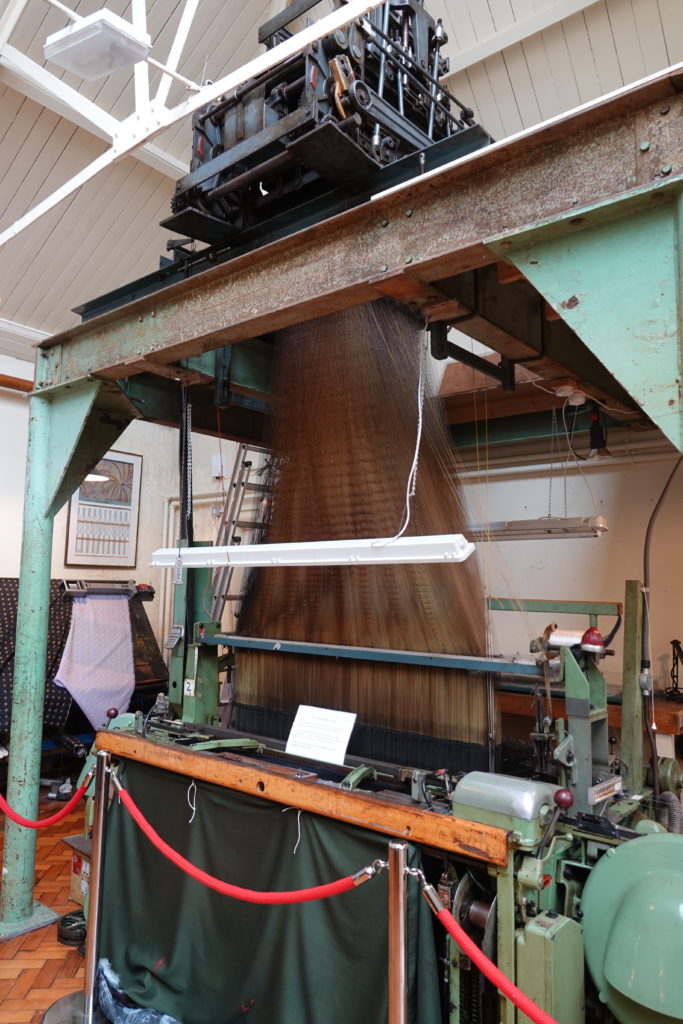
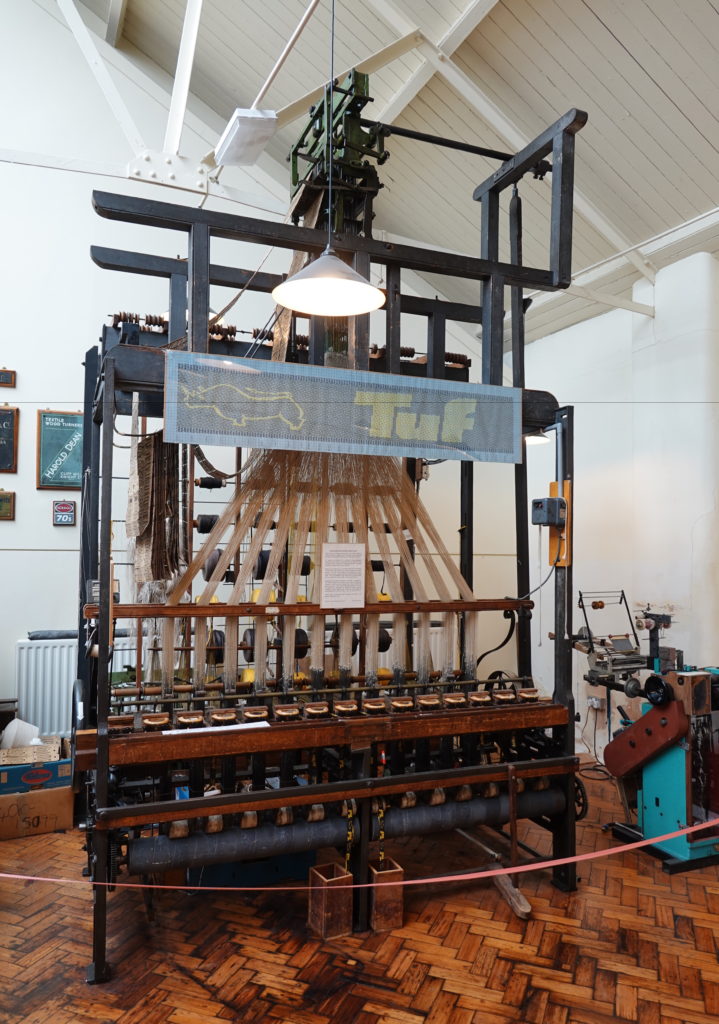
The Jacquard Loom was invented in 1804, and allowed complex colored or textured patterns to be woven automatically under the control of a ribbon of punched cards. The design is first drawn on graph paper…
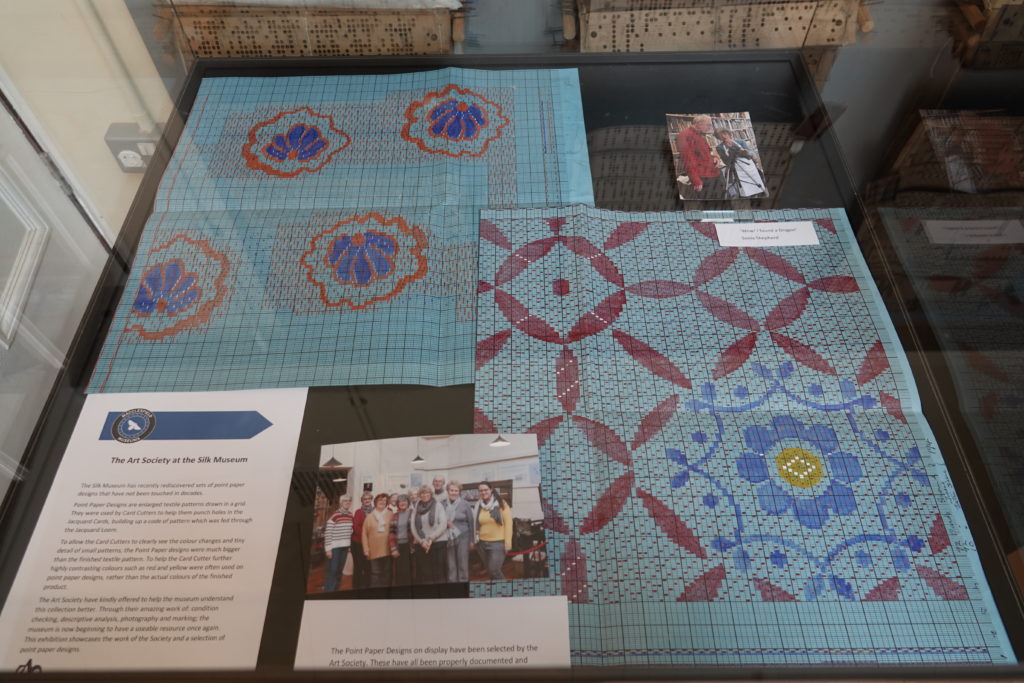
… then transferred using a punching machine onto cards…
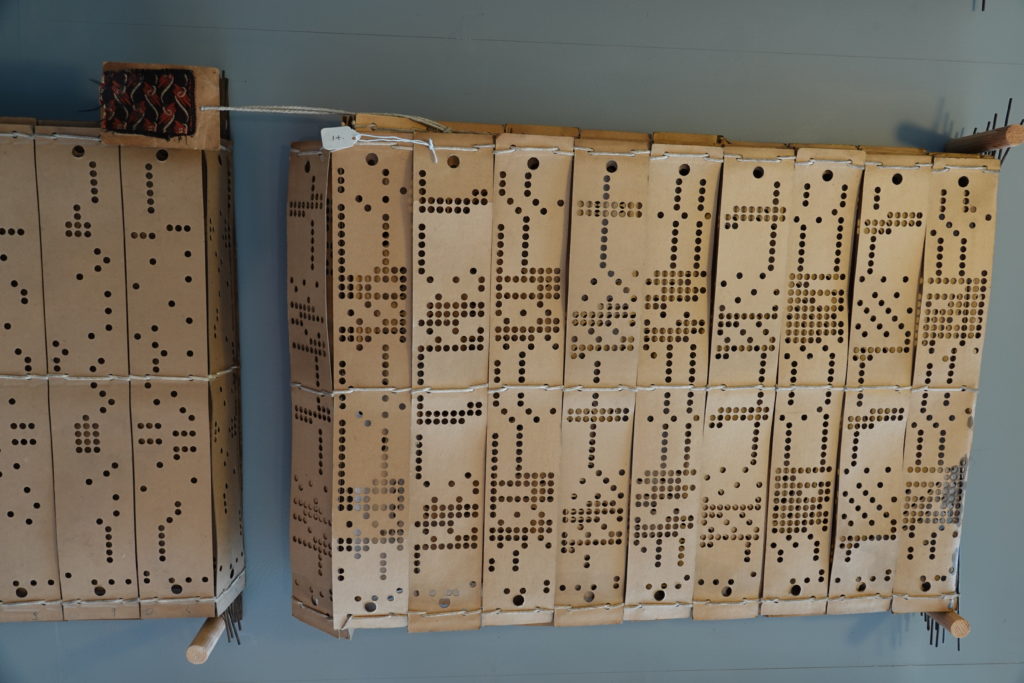
… which controls the loom which weaves the fabric. The cards above make this pattern.
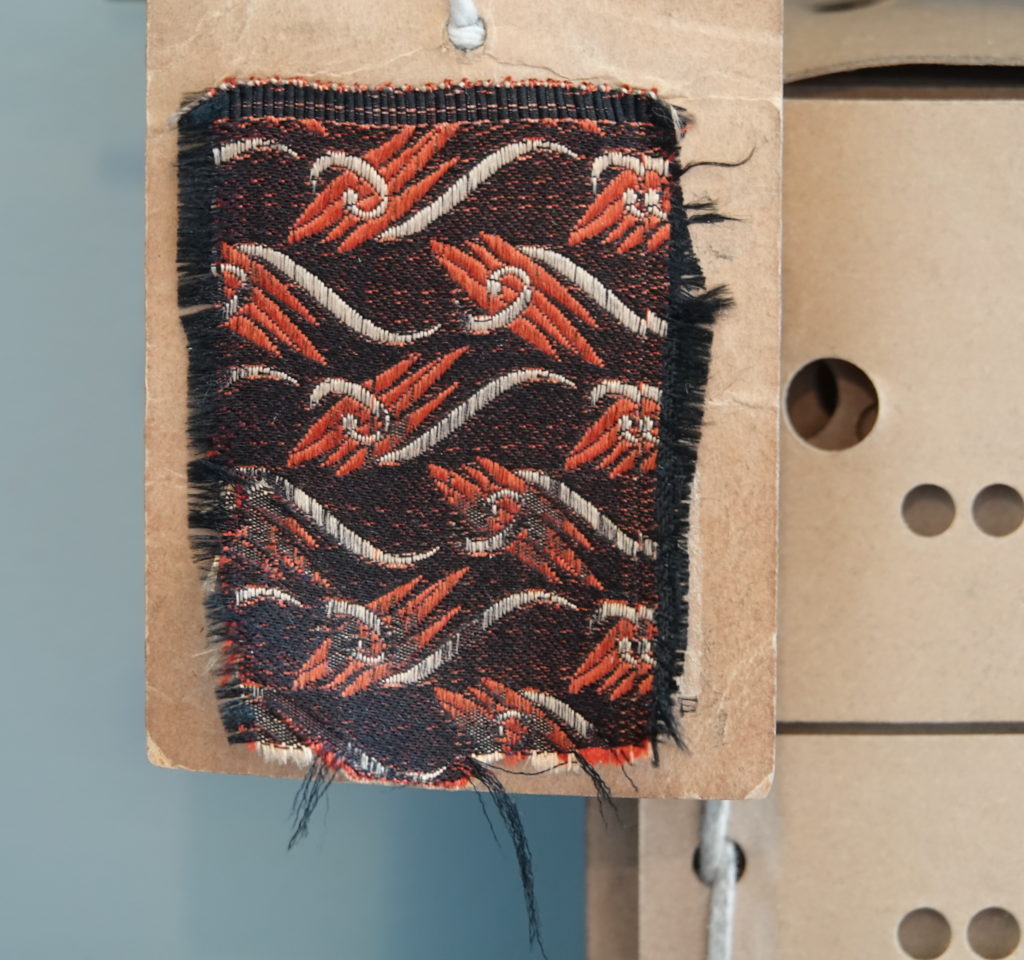
From these devices came the inspiration for the punched cards used by tabulating machines and early computers. This was the start computing and robotics.
Next door in the mill there are many more looms.
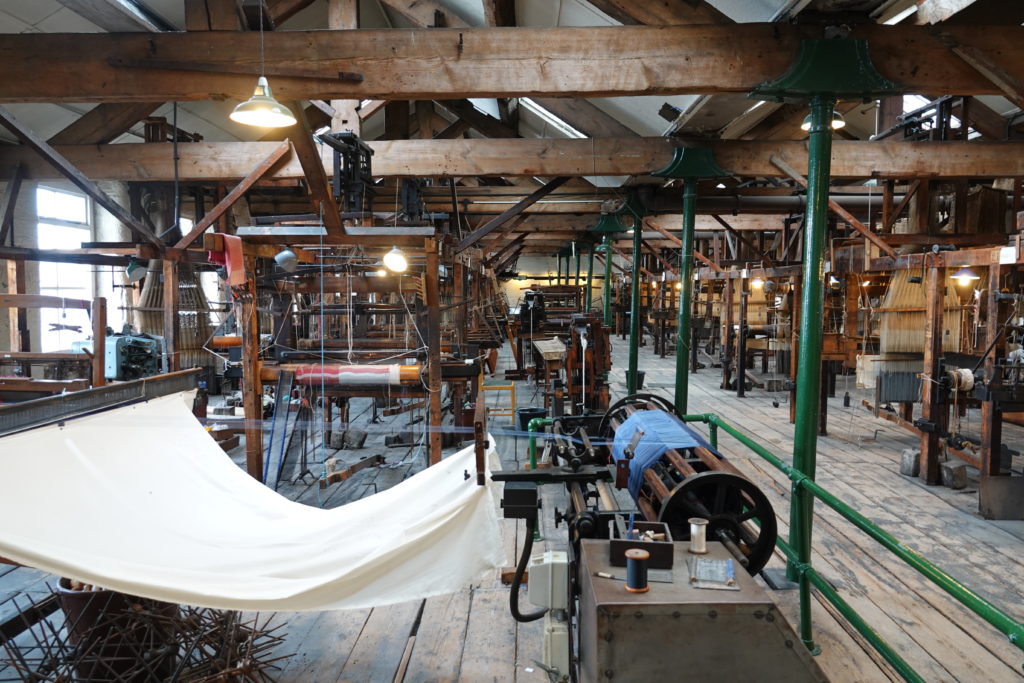
We got to see this one in operation.

It’s powered by a treadle and the shuttle is batted from side to side by hand. The cards chunk through the reader.

When the whole mill was operation it must have made a terrible noise.
The cards are in a loop the pattern repeats. Computer geeks call this iteration. Recursion is nothing new, either. Here they have a Jacquard loom that is programmed to weave a picture of a Jacquard loom.
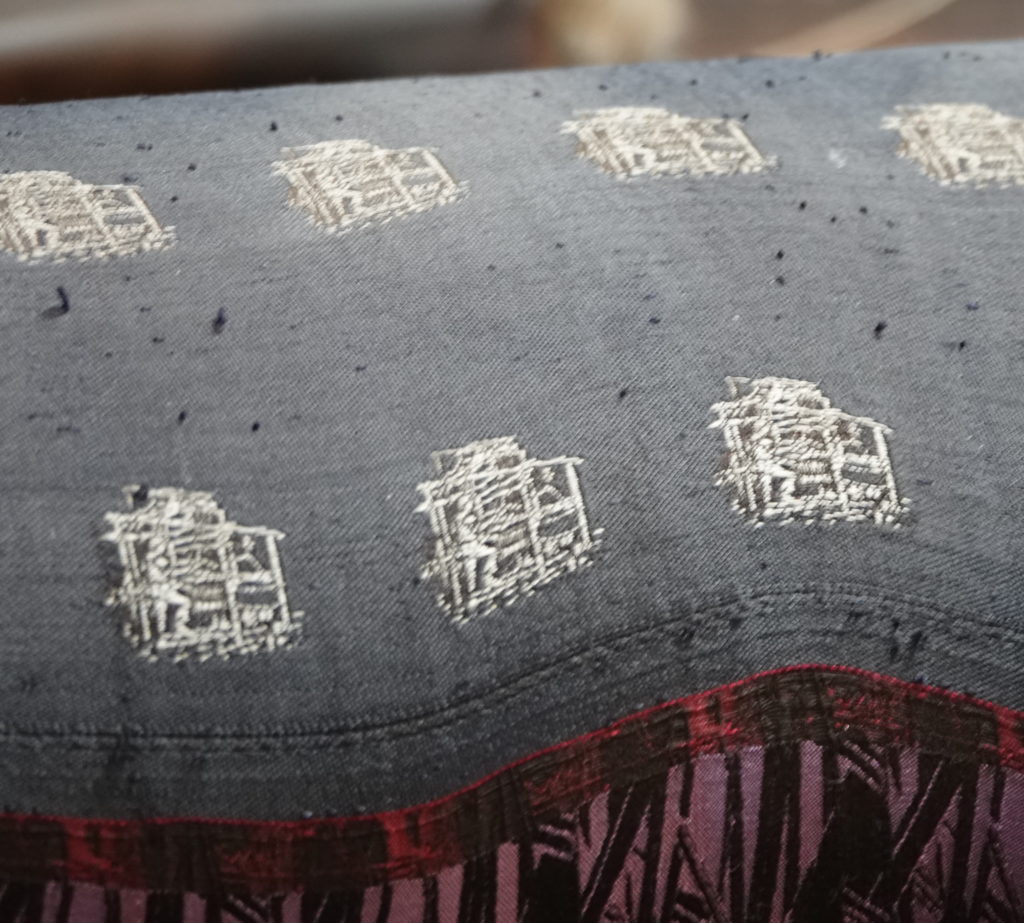
Women and children got the less skilled jobs. Only men were allowed to be mechanics (or tacklers as they are called in this industry).

After lunch we continued to Bollington, a pretty village with sloping streets of stone cottages…


… and a strangely truncated church.

We are moored on a steep embankment/aqueduct.
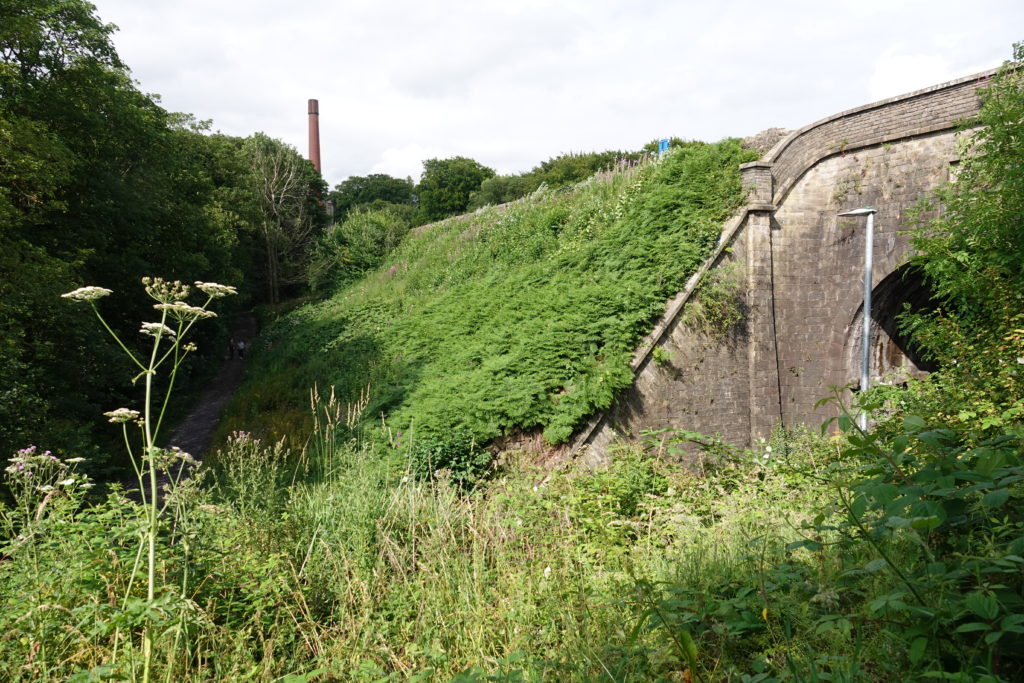
If that ever breaks the town will be washed away by canal water. There is a precipitous flight of steps to get back to the canal.
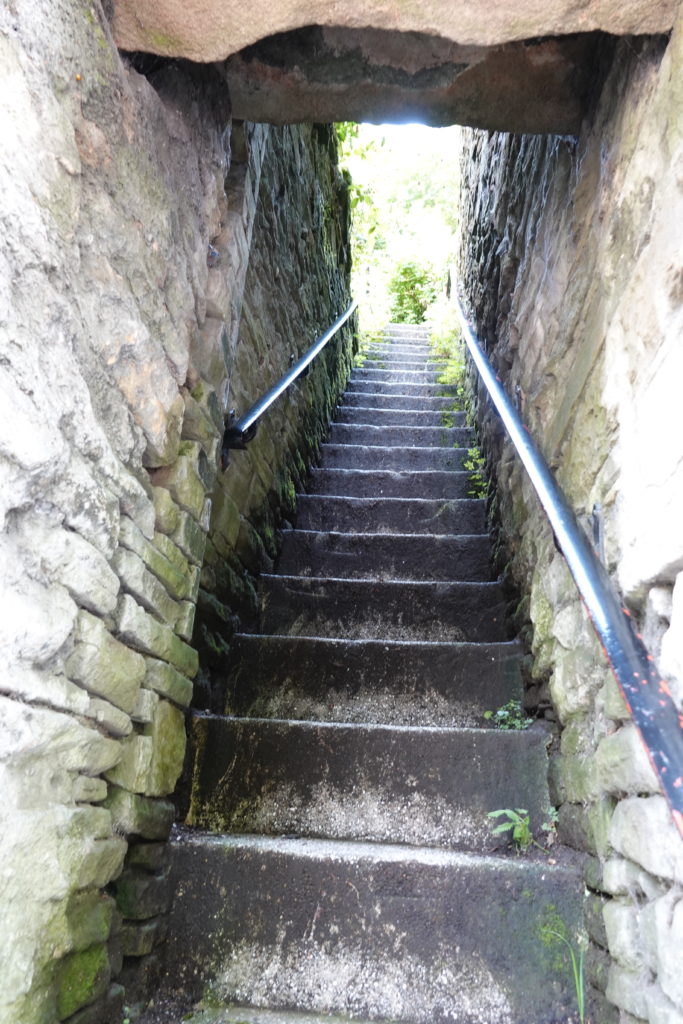
At least there is a handrail on both sides, so it’s better than Amsterdam.